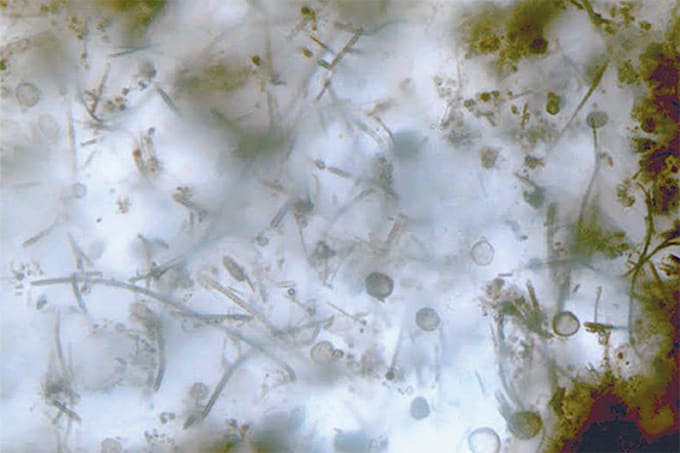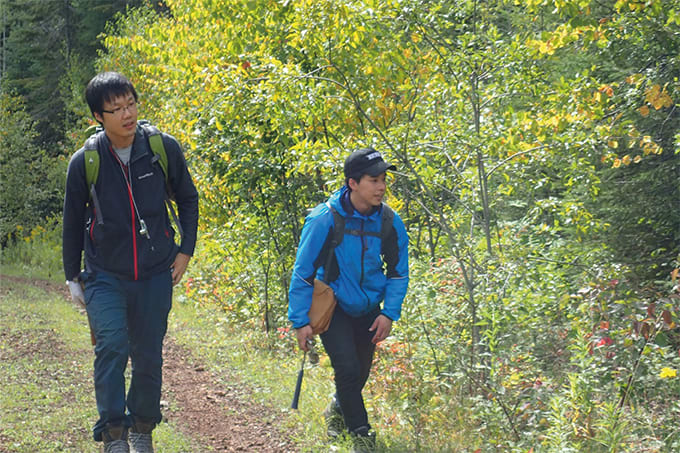Cross-border trading in Europe has roots that far predate the political agreements governing these practices today. There is much evidence for this activity in the form of recent works using trace element and isotope analysis; now Heide Nørgaard and colleagues join the party using X-ray spectrometry (EDXRF) and multicollector-inductively coupled plasma MS (MC-ICP-MS).
Researchers applied these techniques to a collection of 210 metal objects from early Bronze Age (2000-1600 BCE) Denmark – a sample pool representing almost half the bronze artifacts available from this area at this time (1). “It’s astonishing how rapidly trade growth took off in Scandinavia,” says Heide Nørgaard, referencing a previous study conducted by Swedish archeologists (2). “From 2000 BC to 1600 BC, we see the volume of bronze rise from 60kg to 500kg.” But where did all this bronze come from?
Fortunately, many of the samples had been processed during previous archaeological work in the 1960s. The result? A glut of high-quality and well-preserved materials; a welcome change from the milligram quantities of material typically available for archaeological analyses.
Using Danish artifacts stored at the Curt-Engelhorn Center in Mannheim, Germany, and well as from several other European museums, the team were able to uncover a complex network of trade spanning much of central and northern Europe. Given that the Bronze Age Danes inhabited an area devoid of natural ore, the team suggests such trade routes may represent the means by which these people obtained their tools. Combining multiple analytical techniques proved key; whilst lead isotope ratios differ between ore deposits – in many respects acting as an isotopic “fingerprint” – they are not unique enough to distinguish between deposits with similar signatures. Here, EDXRF stepped up to the plate: “It’s a superb technique because it’s non-destructive and provides crucial information that allows us to precisely localize samples,” says coinvestigator Ernst Pernicka. “In combination with isotope analysis and Heide’s archaeological knowledge, trace element analysis has helped us to establish a complete overview of trading patterns in the early Bronze Age.”
And it seems Bronze Age Danes liked to shop around… Early copper imports bore the signatures of ore from modern-day Slovakia, but the signatures of later items suggest that trade soon turned other sources in the eastern and southern Alps. Of course, copper is only one half of the jigsaw. Bronze also contains tin, but determining the provenance of this ore is proving far more complicated – and with no clear answer in sight. However, tin isotope ratios may provide a decisive clue (3). Unperturbed, Nørgaard says the team is not done yet: “We have a lot more data to analyze, and nearly 600 samples from the Middle Bronze Age to work with. That should tell us even more about European trading habits.”
References
- HW Nørgaard et al., “On the trail of Scandinavia’s early metallurgy: Provenance, transfer and mixing”, PLoS One, 14, e0219574 (2019). DOI: 10.1371/journal.pone.0219574.
- J Ling et al., “Moving metals or indigenous mining? Provenancing Scandinavian Bronze Age artefacts by lead isotopes and trace elements”, J Arch Sci, 40, 291 (2013). DOI: 10.1016/j.jas.2012.05.040.
- D Berger et al., “Isotope systematics and chemical composition of tin ingots from Mochlos (Crete) and other Late Bronze Age sites in the eastern Mediterranean Sea: An ultimate key to tin provenance?”, PLoS One, 14, e0218326 (2019). DOI: 10.1371/journal.pone.0218326.




